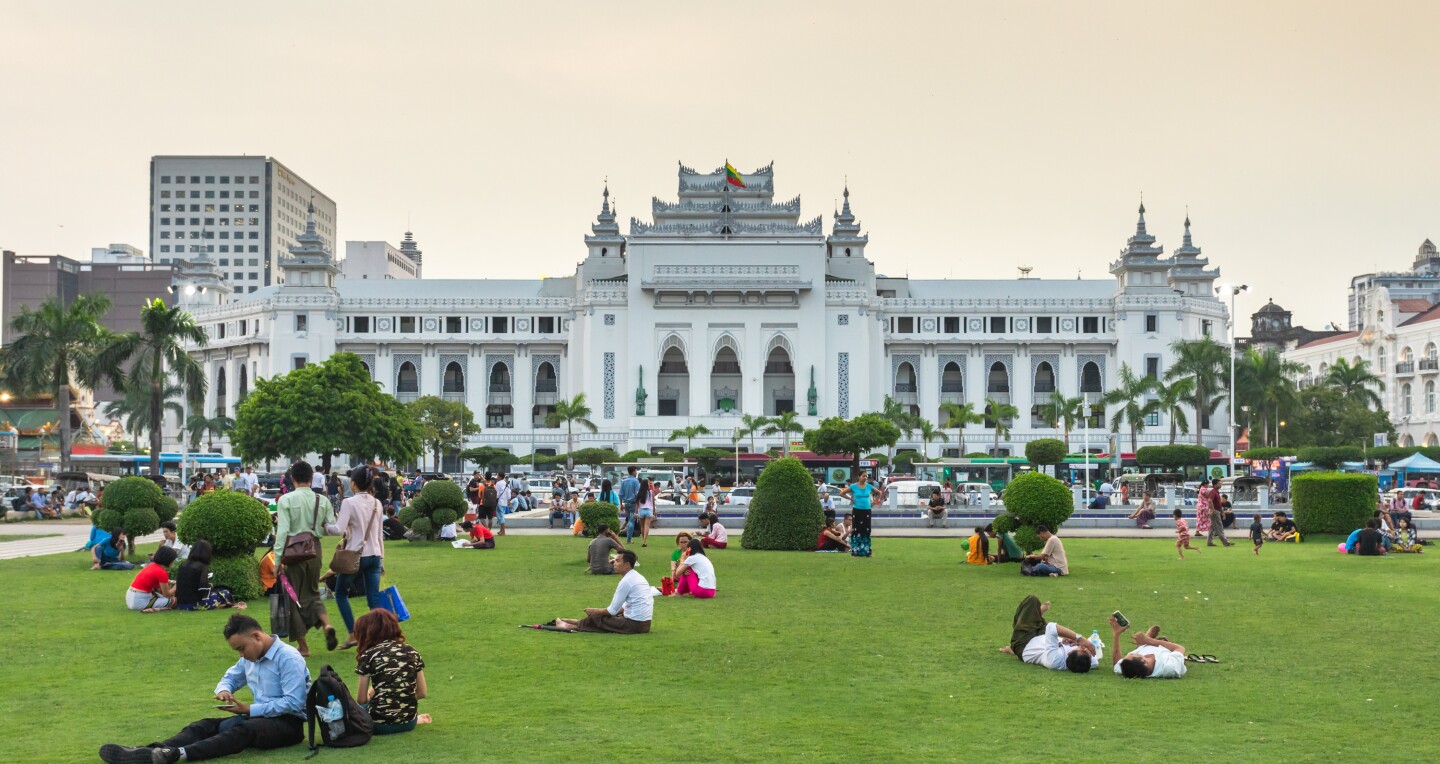Overview
When’s the best time to go to Myanmar?
Picking the optimum time to travel is vital in Myanmar, which tends to have more extreme weather than other countries in the region. The southwest monsoon brings rain from May to October and roads can become impassable during this period. The post-monsoon window between November and February is dry and cool-ish and is the best time to visit most of Myanmar. From March to May, the country becomes extremely hot and travel can be highly uncomfortable.
How to get around Myanmar
Although there are now several open land borders between Thailand and Myanmar, the vast majority of visitors enter the country by air at either Yangon or Mandalay. There is also an international airport in Nay Pyi Daw, but the capital is of limited interest to tourists. The cheapest way to reach Myanmar from outside the region is to fly to a regional hub such as Bangkok or Singapore and then hop on a connecting flight to Yangon or Mandalay.
With much of the country still off-limits to foreign visitors due to ongoing ethnic conflict, forward planning is necessary when visiting Myanmar.
For major destinations in the country, the best option is usually to fly domestically. If you are on a budget, buses are faster and cheaper than trains, but don’t expect much in the way of comfort. Taxis are cheap and plentiful in Yangon, but be warned: The city’s traffic is reliably appalling and short journeys can take a long time, especially during peak hours.
Food and drink to try in Myanmar
Drawing on techniques from neighboring countries such as India, Thailand, China, and Bangladesh, Myanmar’s cuisine is a mélange of influences that varies wildly from region to region. In the west, Rakhine State specializes in spicy curries while the food in Shan State is very similar to that of northern Thailand. Salads are a feature of Myanmar cuisine. Known as athouq, they include maji-yweq thouq, made with young tamarind leaves, and leq-p’eq, better known as tea-leaf salad. The best places to sample the delights of Myanmar cuisine are in tourist centers like Yangon and Inle Lake where upscale venues rub shoulders with more humble, but still desirable, options.
Culture in Myanmar
Myanmar’s cultural highlights are very much intertwined with the country’s rich spiritual fabric. Buddhism is practiced by an estimated 89% of the population and the country is scattered with ornate pagodas and stunning temple complexes. The apex of this spirituality can be found at Yangon’s Shwedagon Pagoda and also at leading attractions like Bagan and the archeologically rich site of Mrauk U in Rakhine State. The country is well-known for its arts and crafts, which are also heavily influenced by Buddhism. Artisanal traditions include woodcarving, stone carving, turnery, painting, and lacquerware. The best place to sample contemporary Myanmar culture is in Yangon, the country’s biggest city, which has a smattering of modern art galleries, museums, and venues for live music and DJs.
Myanmar’s colorful and lively festivals are based on the lunar calendar and can really enhance your trip if it happens to coincide with one. The most popular festival in the calendar is Thingyan, the annual water festival where locals take to the streets with water pistols and buckets of water as the temperatures soar. November is the date for the Fire Balloon Festival at Taunggyi, east of Inle Lake. At night, balloons are released with fireworks strapped underneath them—with predictably explosive consequences. Also worth catching are the New Year celebrations in Shan State, one of the country’s most ethnically diverse regions. Expect live bands, traditional dancing, and—on New Year’s Eve itself—fireworks and a party vibe.
Local travel tips for Myanmar
Don’t expect super-fast internet. Coverage in the country (especially outside Yangon and Mandalay) is still limited and speeds are notoriously spotty and slow, even in the big population centers. There are now plenty of ATMs in Yangon and other major population centers so access to cash is not as much of an issue as it was previously. If you are carrying U.S. dollars to exchange, try to make sure they are in mint condition as there’s a distinct possibility they won’t be accepted otherwise. Try to book a hotel well in advance of your trip. Hotels remain in short supply in the country and can be expensive for what they are. If you don’t book your preferred choice ahead of time you might be forced to pay over the odds for something substandard.
Guide Editor
Duncan Forgan
After arriving on something of a whim, Duncan Forgan has been living and working in Bangkok since 2013. In a previous life he was a features writer for the national newspapers in his native Scotland, an editor of various travel guides in the Middle East, and a long-term freelancer in Vietnam. Now he prefers to discover new street food and to drive his motorbike around the sois. When he’s not comparing venues for Isaan food, he writes and broadcasts for a variety of outlets worldwide on Asian travel, culture, and cuisine.







